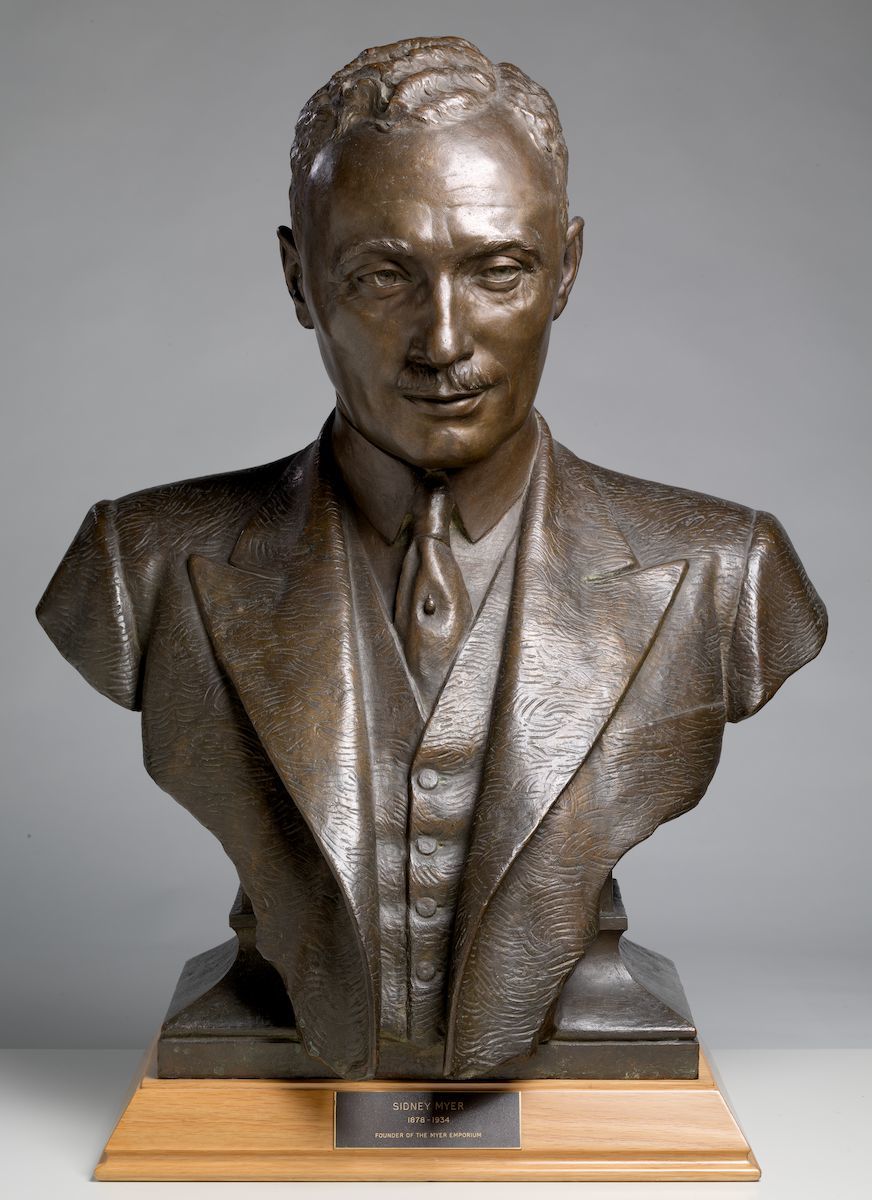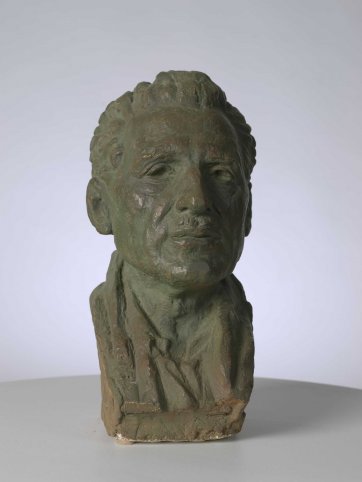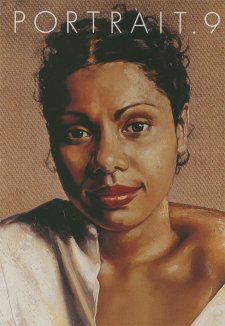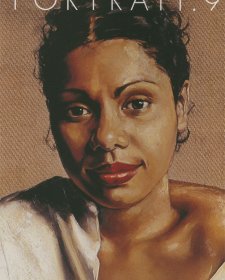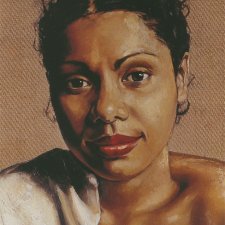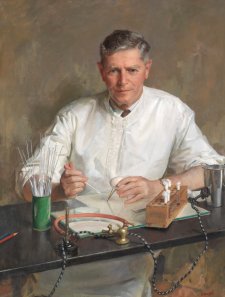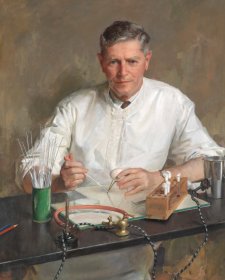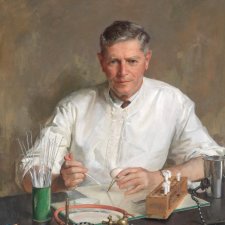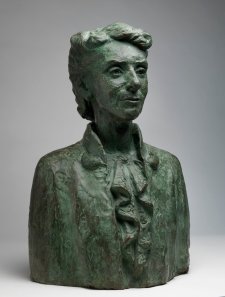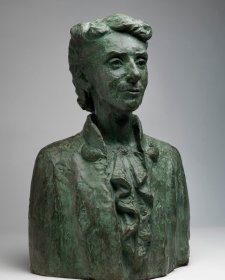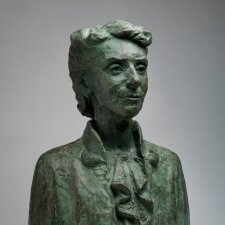Australia’s tradition of sculpted portraits stretches back to the early decades of the nineteenth century and continues to sustain a group of dedicated sculptors. This tradition is examined in the National Portrait Gallery's current exhibition Presence & Absence: Portrait Sculpture in Australia. Over the past five years the National Portrait Gallery has begun to develop a collection of portrait busts that reflects the richness of the continuing tradition.
The collection is diverse, from a patrician bust of John Fairfax sculpted by the expatriate Australian sculptor Charles Summers in Rome in 1873 to a bronze head of racing driver Peter Brock, sculpted by one of Australia’s present-day practitioners, Julie Edgar. The collection also includes a number of busts of Australian prime ministers that were executed for the Prime Ministers Avenue in Ballarat, sculpted by Victor Greenhalgh. In the history of Australian sculpture, I think it is possible to identify the 1920s and 1930s as a high tide mark. Two figures of great sculptural skill and authority, Rayner Hoff and George Lambert were at work on significant public commissions memorialising aspects of Australia’s involvement in the First World War. Through their studio-based teaching both Lambert and Hoff passed their experience on to talented pupils who themselves went on to careers as sculptors.
Rayner Hoff had arrived from England in 1924 to teach sculpture at East Sydney Technical College. He immediately began to exhibit his work and undertook a series of substantial commissions, the best know of which is the Anzac Memorial in Hyde Park in Sydney. In 1937 he designed the memorial to King George V which stands opposite Old Parliament House but he died before it was completed.
The Galley is fortunate to have Rayner Hoff’s last portrait bust, also from the year of his death. The subject of the bust is Alfred Hill, composer, conductor and violinist. Born in Melbourne, Hill spent his youth in New Zealand, and studied in Leipzig where he performed under conductors including Brahms, Grieg, Tchaikovsky and Bruch.
When Hoff sculpted his bust, Hill had been teaching and conducting in Sydney for 40 years and had been Professor of Theory and Composition at the New South Wales State Conservatorium of Music since 1916. Hill’s life was immensely productive; his oeuvre comprises more than 500 works.
Rayner Hoff had many talented pupils (including Enid Fleming whose busts of Charles Kingsford Smith and Charles Ulm were featured in Portrait 2). Hoff’s best pupil was Barbara Tribe. In 1935 she became the first woman and the first sculptor to win the much-coveted New South Wales Travelling Art Scholarship that allowed an Australian artist to study overseas for two years. Tribe went to England and from that point England was her base. She settled in Cornwall where she continued to produce sculptures up until her death. Tribe sculpted her classical and restrained bust of Stanley Bruce in 1937. Stanley Bruce had been Prime Minister from 1923 to 1929 and when sculpted by Barbara Tribe was Australia’s High Commissioner in London, a post he held from 1933 to 1945. He remained an influential mediator between Britain and Australia, and was created 1st Viscount Bruce of Melbourne in 1947.
Like Hoff’s bust of Hill, Barbara Tribe’s bust of Stanley Bruce remained in plaster. It was cast in bronze only in 1999. The sculptor was a great enthusiast for the National Portrait Gallery and her donation of the bust in 2000 was one of the last acts of generosity in her long and fulfilling career.
Arthur Murch is best known as a painter of figure groups in idyllic settings, but he made sculptures throughout his career. His chief mentor was George Lambert, whom Murch assisted from 1927 to 1930, during the period of Lambert’s heaviest (and ultimately exhausting) activity as a sculptor of public statuary. In 1935 Murch sculpted a noble portrait head of his earlier teacher Antonio Dattilo Rubbo. Italian-born and trained, Rubbo taught in Sydney from 1897 and along with Julian Ashton was the most significant teacher in Sydney in the first half of the twentieth century. Grace Cossington Smith, Roland Wakelin and Roi de Maistre were all Rubbo’s students, and the first modernist paintings in Australia arose from his openness to new ideas.
The sculptor of the imposing 1936 bust of Sidney Myer, Paul Montford, was based in Melbourne, rather than Sydney but he, too, had close connections to Canberra, having sculpted the bronze plagues of political figures in Kings Hall in Old Parliament Housoe. Montford’s bust of Myer was completed two years after Myer’s death in 1934 and celebrates the man who established the Myer retailing empire. Sidney Myer was not only an industrious businessman, he was also a philanthropist who made generous contributions to cultural and charitable causes. In 1920 he married Merlyn Baillieu, from an established Queenscliff family, and their descendants have extended and continued the family tradition of philanthropic generosity.
